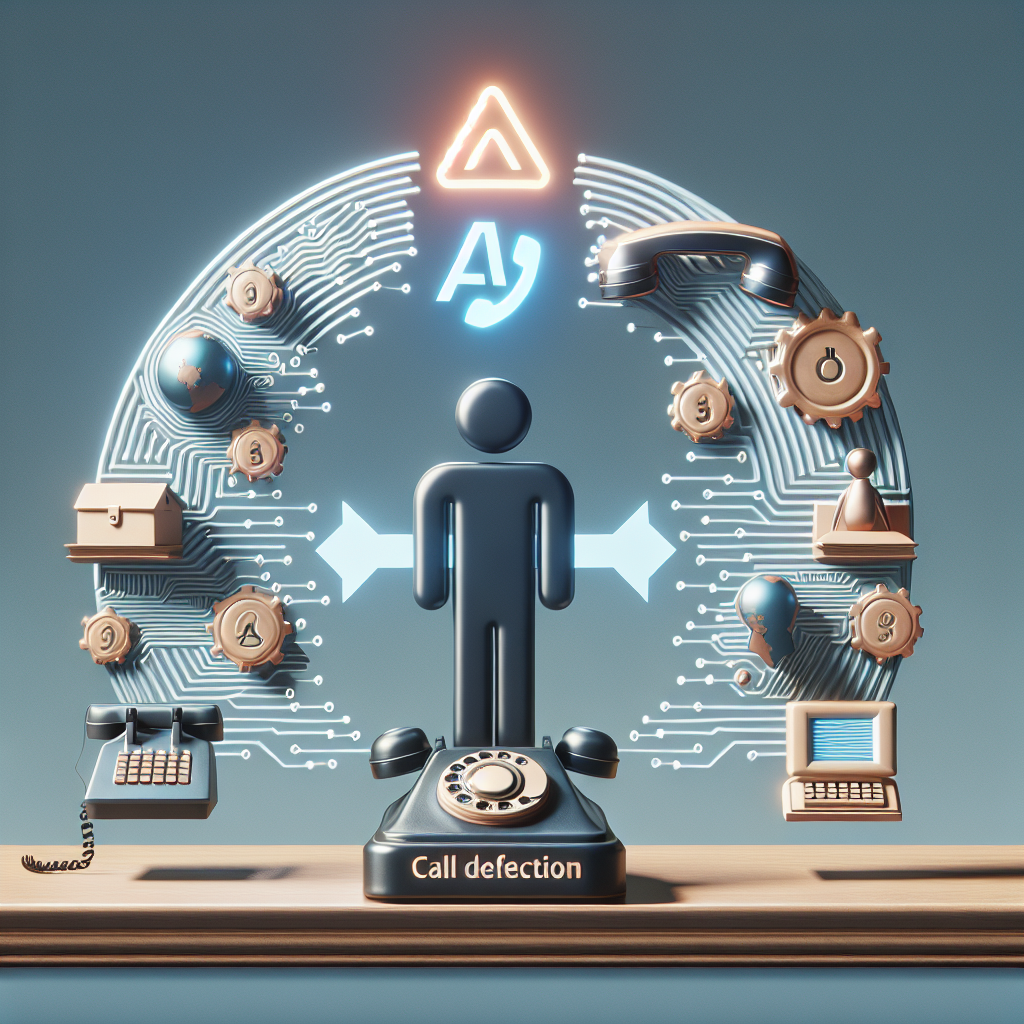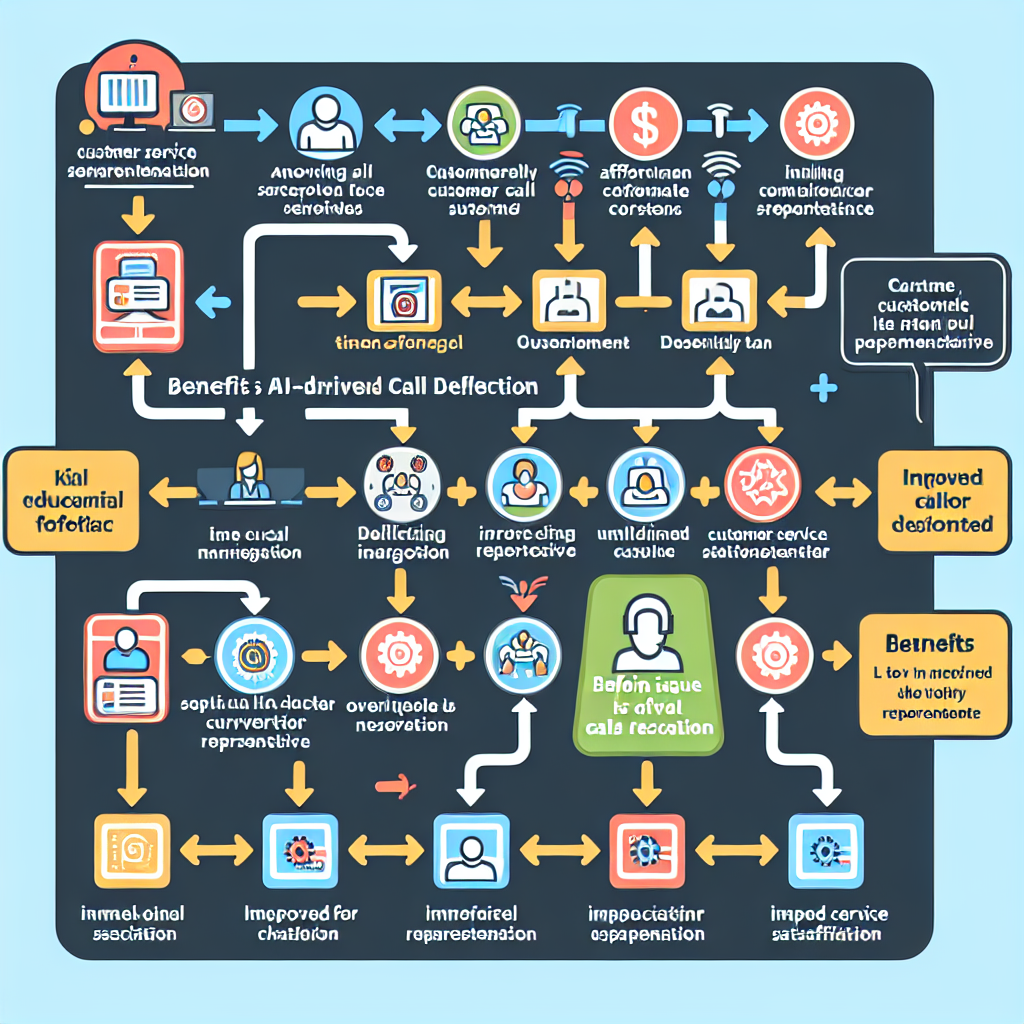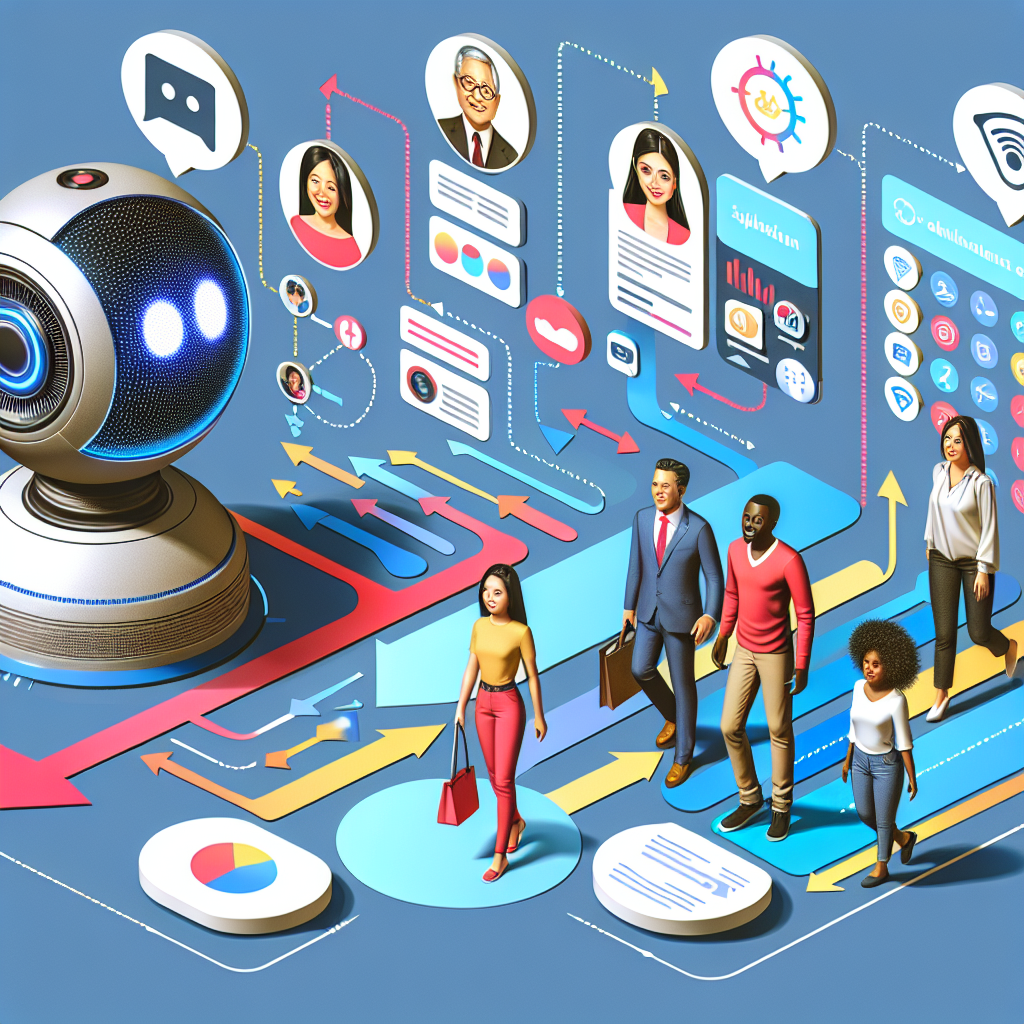
In today's digitally connected world, customer support has evolved from pure phone call interactions to more dynamic interactions across various platforms. At the helm of this evolution is the revolutionary concept of AI-Driven Call Deflection - a customer service strategy that leverages the power of technology to save time and streamline operations. This approach ensures that customers are professionally guided to the appropriate digital support platforms depending on their specific inquiries, effectively freeing up resources. The magic of AI allows call centers to handle numerous incoming calls seamlessly, guiding customers to optimal solutions on the right channels.

Implementing AI-driven call deflection strategy is about far more than merely reducing the volume of incoming calls. The aim here is to optimize the entire support ecosystem by pushing for digital multichannel support. This shift broadens access channels allowing customers to choose the most comfortable and convenient channel for them – whether it's email, chat, social media, or a self-service web portal. By directing customers to digital platforms, companies can ensure quick resolution of simple-to-moderate issues, which speeds up customer support and boosts the overall user experience.
More importantly, integrating artificial intelligence into these systems ensures the process is far from robotic or unsympathetic. Chatbots and virtual assistants, powered by AI, can be programmed to understand various nuances in human language, ultimately creating a more personal and engaging user experience. AI techniques such as Natural Language Processing (NLP), Machine Learning, and Deep Learning go a long way in understanding, analyzing, and drawing powerful insights from customer interactions, creating the potential for continually improving standards of customer service.
In conclusion, AI-Driven Call Deflection is defining the future of customer support, enhancing efficiency, improving customer satisfaction, and setting the path for a more seamless, technological era of customer service.
At its core, AI-driven call deflection is designed to enhance the customer service experience by optimizing customer interactions and guiding customers to digital channels where appropriate. It all starts with AI identifying the nature of the customer's request or query using advanced natural language processing and machine learning algorithms.
Once a customer's request has been identified and interpreted, the AI technology can decide the optimum path for the inquiry. It may redirect the customer to a chatbot, an online self-service portal, or another digital tool or channel. These automated solutions can often help the customer solve their queries faster, reducing the need for costly human intervention.
But how does the AI make such decisions? It's all about data. By gathering and analyzing vast amounts of data regarding past customer interactions, the AI can predict what a customer's needs might be based on their initial inquiry. This could involve recognizing certain keywords or phrases that are indicative of a specific problem or request. Once this prediction is made, the AI can then take the appropriate action to lead the customer to the most effective resolution channel.
A critical factor in the success of AI call deflection is its ability to learn and improve itself over time. This is where machine learning comes in. With every interaction, the AI becomes smarter, improving its service quality, accuracy, and response time. Thus, companies implementing this technology can expect continual improvement in their customer service efficiency and effectiveness.
The future of customer service relies heavily on AI technology, and AI-driven call deflection plays a vital role in this shift. Companies that choose to make use of this technology stand to benefit in terms of improved service delivery and cost savings. However, it’s important to always ensure that the human touch is preserved when necessary, balancing automated responses and ease of use with empathetic and personal engagement.
As our digital age continues to evolve, businesses are increasingly leaning on innovative tools to enhance customer service. One tool gaining considerable attention is AI-driven call deflection, a contemporary strategy that guides customer queries to more efficient digital channels rather than traditional call centers. When used aptly, this approach delivers an array of key benefits.

At the forefront, reduced operational costs often become the most appealing advantage. By shifting customers to automated FAQs, chatbots, email, and social media platforms, businesses significantly cut costs required to maintain large call center teams. According to the IBM Watson blog, a chatbot implementation can cut customer service costs by up to 30%.
Simultaneously, improved customer satisfaction is another notable advantage. In our digital world where instant gratification is regularly expected, the ability for customers to receive immediate answers via automated paths boosts overall satisfaction. Research from Salesforce indicates that 64% of consumers and 80% of business buyers expect companies to respond to and interact with them in real time.
Lastly, call deflection leads to a higher volume of efficiently handled requests. Traditional call centers suffer from limitations such as call waiting times, while AI-driven solutions can multitask and handle numerous queries simultaneously. This efficient handling of increased volume bolsters customer satisfaction further while augmenting a company's bottom line.
Given these potent benefits, AI-driven call deflection establishes itself as a vital tool in our increasingly digital and automated customer service landscape. However, to leverage these advantages, businesses are encouraged to fully understand their customers’ needs and integrate AI solutions that not just deflect calls, but also facilitate superior customer experiences.
Implementing an effective AI-driven call deflection strategy refers to guiding customers to a more suitable digital channel when it's not necessary to have a direct human interaction. This practice not only helms in reducing call volume but also enables businesses to deliver fast and efficient customer service. However, setting up the system requires a solid infrastructure, a well-trained AI system, and a smooth integration with the existing customer service tools.
Before starting with AI call deflection, it's crucial to ensure that the required infrastructure is in place. This includes having a robust content repository, a flexible AI engine, and an interactive voice response (IVR) system. Once the structure is furnished, businesses can bring in AI to handle simple queries and guide customers to appropriate channels such as web pages, chatbots, or self-service portals, greatly reducing the burden on live agents. Read more about call center automation.
Setting up a functional AI model involves mining historical data, recognizing patterns, predicting customer behavior, and then refining techniques for better outcomes. AI training plays a pivotal role in this. Most AI systems learn and improve through machine learning which can be supervised, unsupervised, or reinforcement based. For customer service, supervised learning can be an effective method. Learn more about AI training methodologies here.
For the AI system to work congruently with your existing customer service tools, it needs to be well-integrated. Integration will ensure a seamless flow of data between the AI system and other tools. It should also include training the system to understand the language, context, and the emotional tone of the interaction and respond appropriately. This can then lead to personalized customer interactions, enhancing the customer experience at large. Learn more about how to integrate AI with your customer service tools.
By properly implementing AI-driven call deflection, companies can ensure that their customer service representatives are available for complex situations, optimizing the overall customer service process.Read more about the future of customer service here.
In the contemporary, digitally-driven customer service model, companies worldwide are leveraging the power of AI-driven call deflection to enhance consumer interactions and streamline their service processes. Here we examine some successful implementations of this transformative technology.
Bell Canada, the largest telecommunications company in Canada, made giant leaps in customer satisfaction and efficiency by successfully implementing AI-driven voice assistants. Used for initial customer interaction, these voice bots were effective in comprehending customer needs and redirecting them to the most suitable digital channels when appropriate, while managing complexity with simplicity.

Another notable application can be seen with the leading American bank, Bank of America. Their virtual assistant, Erica, has proven to be a laudable instance of AI-driven call deflection. Built on AI and predictive analytics, Erica engages in textual and voice interactions with customers, recommending the most fitting digital channels for their query. This successful integration not only deflected calls but also added a personal touch, making the customer journey more compassionate.
Lastly, Amazon's Alexa stands as a paradigm of how digital call deflection can transform customer experience. By deploying AI, Alexa, an ever-evolving service, skillfully manages to handle a wide array of customer queries, and if necessary, recommends suitable digital platforms for complex issues. This intelligent assistance has unquestionably enhanced user experience and significantly driven call volumes down.
To summarize, AI-driven call deflection has shown commendable results in facilitating smooth customer experiences, harnessing the power of digital channels, and fortifying the efficiency of customer service models. These real-world cases provide tangible evidence that smart automation, when implemented appropriately, can drive significant improvements in operational efficiency and customer satisfaction.
In the rapidly evolving landscape of customer service, AI-driven call deflection is heralding a significant shift. Traditional communication channels are often inefficient, making AI an instrumental game-changer in guiding customers to digital platforms when appropriate, while also reducing the load on human agents.
The future trends in AI call deflection witness an impressive expansion beyond its preliminary role of rerouting calls. Predictive analytics and machine learning are set to play pivotal roles. These technologies, riding on AI's growing sophistication, will be able to anticipate customer needs and guide them to suitably responsive digital channels. No longer will customers have to navigate through labyrinthine options - the advanced AI will decipher the most effective channel to resolve an issue instantly, via either self-service tools, live chat, or phone support.
The aspect of conversational AI is also poised to blossom. Instead of static pre-recorded messages, customers will engage with AI that understands and replies contextually. Using advanced Natural Language Processing (NLP), these AI agents will hold meaningful, human-like conversations that not only deflect calls appropriately, but also improve customer satisfaction rates.
Perhaps the most profound impact is on data handling and security. AI-driven call deflection strategies are already capable of gathering and handling vast amounts of data. By making this process more efficient and secure, businesses can leverage valuable insights for improving their customer service as a whole, while also upscaling their data security mechanisms.
In conclusion, AI-driven call deflection technology presents an unprecedented opportunity to streamline and enhance customer service by leveraging data-driven insights. The increasing sophistication of AI, combined with developments in machine learning and NLP, spells a future where customers are guided to the optimal service medium with minimal friction, significantly improving their overall experience.
Start your free trial for My AI Front Desk today, it takes minutes to setup!








